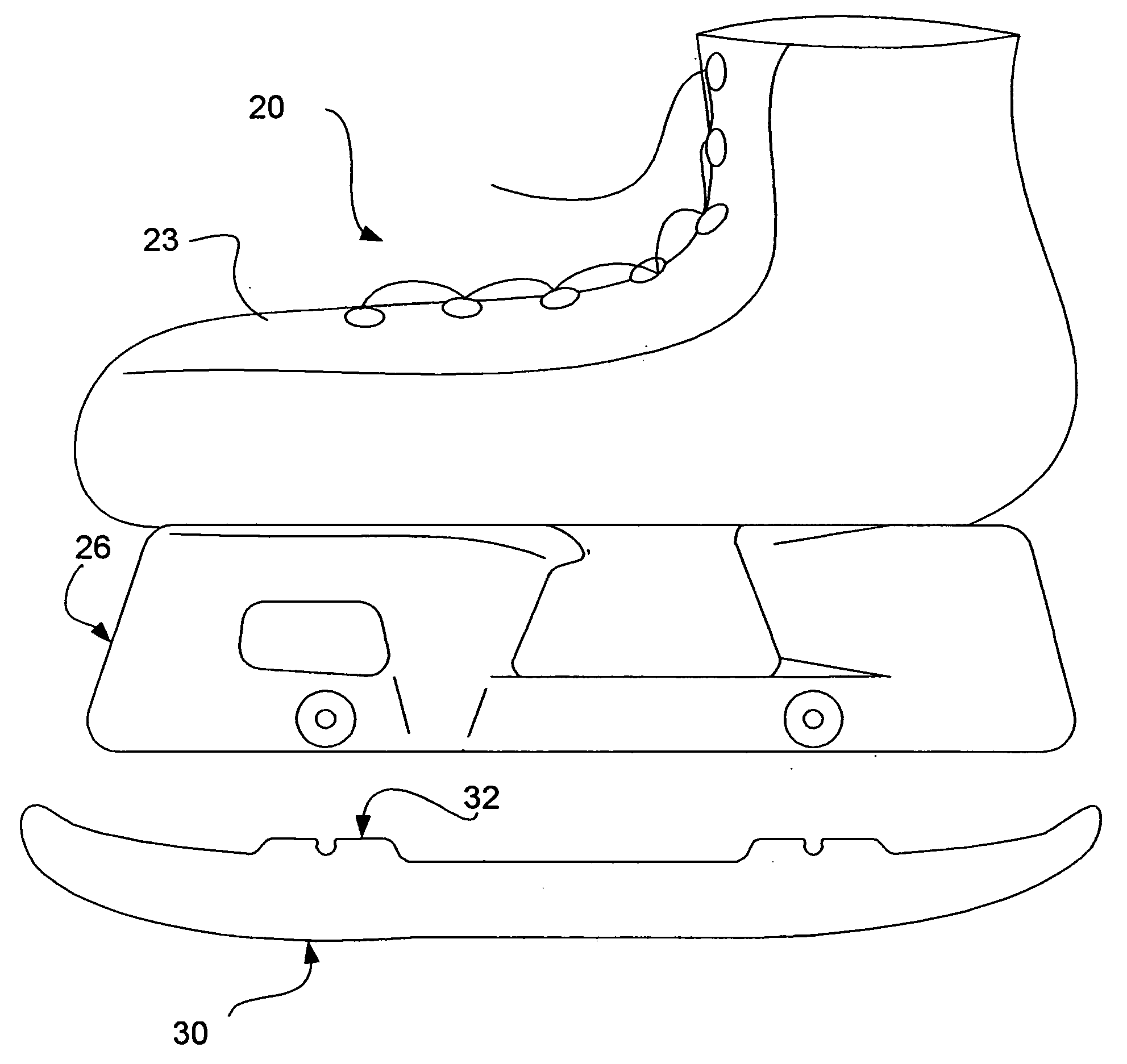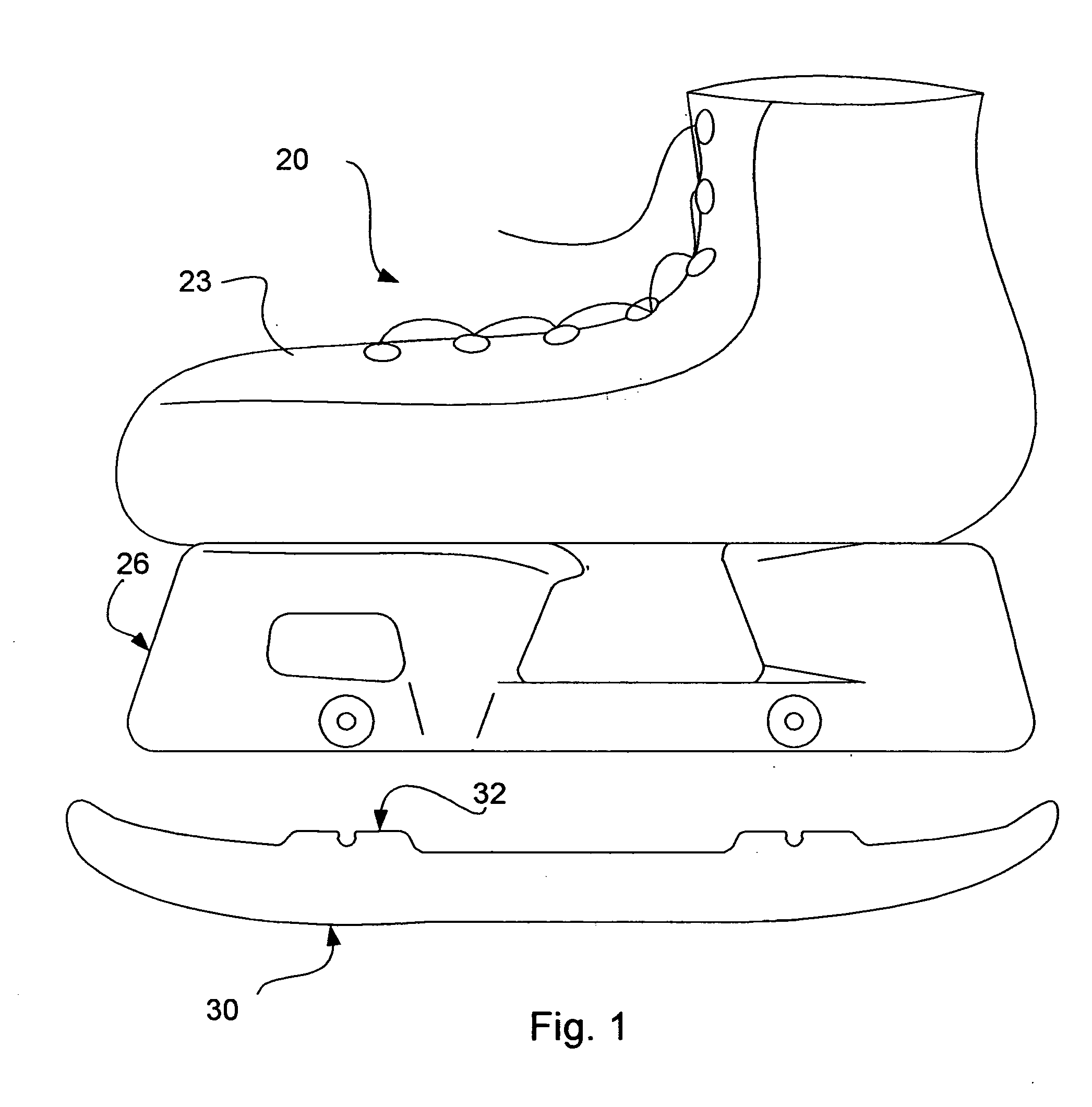Nitinol ice blades
- Summary
- Abstract
- Description
- Claims
- Application Information
AI Technical Summary
Benefits of technology
Problems solved by technology
Method used
Image
Examples
Embodiment Construction
[0027] Referring now to the drawings, wherein like reference numerals designate the same or corresponding parts, and more particularly to FIGS. 1 and 2 thereof, a hockey skate 20 is shown having a boot 23 and a blade holder 26 in which a skate blade 30 in accordance with this invention is removably mounted. The skate blade 30 has attachment structures 32 for engaging complementary structures 34 on the blade holder 26 to securely attach the skate blade 30 to the blade holder 26. These structures 32 and 34 are conventional and are well known to those skilled in the art.
[0028] A figure skate blade 40, shown in FIG. 5, has a Nitinol edge 44 attached to a Titanium or stainless steel blade body 42 by welding, such as laser welding. The edge 44 can also be fitted into a groove in the blade body 42 as shown in FIG. 7, or can be fitted around the blade body in a channel shaped edge 44′ as shown in FIG. 8.
[0029] A speed skate blade 50, shown in FIG. 10, has a skate body 52 with conventional...
PUM
| Property | Measurement | Unit |
|---|---|---|
| Temperature | aaaaa | aaaaa |
| Temperature | aaaaa | aaaaa |
| Temperature | aaaaa | aaaaa |
Abstract
Description
Claims
Application Information
 Login to View More
Login to View More - R&D
- Intellectual Property
- Life Sciences
- Materials
- Tech Scout
- Unparalleled Data Quality
- Higher Quality Content
- 60% Fewer Hallucinations
Browse by: Latest US Patents, China's latest patents, Technical Efficacy Thesaurus, Application Domain, Technology Topic, Popular Technical Reports.
© 2025 PatSnap. All rights reserved.Legal|Privacy policy|Modern Slavery Act Transparency Statement|Sitemap|About US| Contact US: help@patsnap.com



